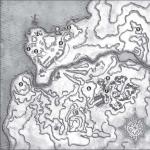Wood stain: what is it for - what colors to choose and water-based or acrylic? Compound. Wood stain processing: professional finishing algorithms How to properly process a wood stain
Stain is a composition with tinting properties. It is used for wood processing, under the influence of wood stain, the tree changes its shade. It is also used when working with fiberboard, chipboard, plywood, MDF. There are two certain types: for work indoors and outdoors. A pigment is added to the compositions for external use, which protects the coating from fading when exposed to ultraviolet rays.
Types of stains
If, when working with wood, you need to give it a different shade, you can’t do without stain. Wondering what kind of stain better fit for a specific purpose, and when considering options in stores, keep in mind that there are different types. Let's consider each of them separately.

Water-based stain
Colors wood perfectly different shades: from lightest to darkest. From existing species- the most common. Available in liquid or dry (powder form). The use of powder requires dilution before starting work in warm water, the liquid composition is sold in ready-made.

A huge plus when working with such a stain is that it has no smell. This is very important factor when working indoors. However, it takes 12 hours or more to dry. It can lift the wood fibers, additional sanding of the wood will be required.









After processing, varnishing is required. Acrylic stain belongs to the same type of compositions. Working with it is somewhat more convenient, but it is also more expensive.

Oil stain
It is a composition of a mixture of oils and dyes. The most commonly used oil is flaxseed. Distinctive features– easy and uniform application, easy to use, it does not have the property of lifting wood fibers. The dyes in the composition are highly resistant to light, it is not subject to fading.

The original color of the surface retains its brightness for a very long period. The coating is resistant to temperature extremes, perfectly protects the tree from moisture.

As for the application - you can use an airbrush, brush or rags. The stain dries quickly, within 2-4 hours. Great for restoration and minor touch-ups.

Alcohol stain
The liquid consists of denatured alcohol and aniline dyes. Thanks to alcohol, the pigment quickly penetrates into the wood and dries within 15-20 minutes. This type of stain requires a fast enough application to prevent uneven staining. It is best to work with a spray gun.

Nitromordant
Produced on the basis of solvents, properties and action are almost the same as alcohol. It dries quickly, forming a coating that is resistant to sunlight. It must be applied with a sprayer to avoid unevenness and difference in tone when staining.









Wood stain color selection
In accordance with the international color classification, each stain is assigned its own code, as well as a name identical to the type of wood, the shade of which you will receive by applying the composition. But, choosing a stain only based on the name on the label, you run the risk of encountering an unexpected result. This can happen for various reasons.

Manufactured by various manufacturers, stains of the same color can give a different shade. In specialty stores there are samples of wood stained various types stains. They convey the color as accurately as possible, unlike the picture presented on the label, so it is better to focus on them.

Any wood has its own special color, density and texture. All these factors affect the final result, and coloring may not give quite the effect you expected.

The darker the shade of the tree itself, the more dark color It turns out in the end, when using the same stain.

Consider porosity as well: the softer the wood, the more intense the staining result will be. The composition will penetrate deeper and faster into the porous structure. If we compare, for example, pine and maple - pine is more porous, respectively, and the staining results will be different.









The structure of wood in the form of a natural pattern (veins) is also important when staining, affecting the intensity of the result. For example, when staining oak, pigments easily penetrate deep into the veins, due to which they darken faster than the rest of the wood. The hue on the veins will look more saturated.

Before starting work, it is advisable to conduct a color test on a separate board, treated in the same way as the material for painting. First, treat the entire board in one layer, then apply a second layer on 2/3 of the part, and a third layer on 1/3. You can see how the composition is suitable for a particular surface.

Photo stain



































Wood has always been and will be in demand, because it is a natural, living material and no newfangled plastics can compete with it in creating an atmosphere of warmth, kindness and comfort in a room. But like any living material, wood products require care and protection. For this purpose, special varnishes and stains are widely used.
Varnishes and stains protect wooden products from dirt and scratches, and also protect wood from moisture penetration.
Processing wood with these products not only protects it from excess moisture, exposure to light, dirt, scratches and other adverse factors, but also gives refinement and nobility, fixing and emphasizing the natural beauty of the treated wood pattern.
Removing the old coating
Lacquer should always be applied to a clean surface. If this is a new product, then there are no problems. But there are often times when it is necessary to varnish already painted wood, such as window frames, doors or wooden floors, the surface of which has been damaged due to long-term use. And if the integrity of the coating is violated, then its protection is also violated. Therefore, before proceeding with a new treatment, you need to completely clean the surface of the layer of old varnish.
There are three main ways to clean old wood surfaces from old coatings: special solvents, thermal or mechanical impact. It is necessary to determine which method is better to use in each case individually, based on the type of product and the materials used to cover it.

The surface of the product is wetted with a solvent, then removed with a spatula.
In the first method, the old varnish is removed using special liquid solutions, with which the entire surface of the product is abundantly wetted with a paint brush. Immediately after processing, the product must be covered or wrapped plastic wrap to create a thermos effect. After 24 hours, the film is removed and the old coating is carefully removed with a spatula. If the coating is poorly removed, the whole procedure is repeated anew, and so on until it is completely cleaned. wooden surface.
When working with solvents, it is important to remember that they contain toxic substances. Therefore, they must be applied with glasses, rubber gloves and a respirator. At the end of the cleaning, the tree is wiped warm water and let it dry for at least a day. After that, the surface is again ground and primed. And only after that you can apply a new varnish.
In the second method, to remove the old coating, the tree is heated. In this case, the varnish softens and it is easy to remove it with a spatula. They heat it with a building hair dryer, you can also use a blowtorch. But working with it is more difficult, because you need to constantly monitor that the tree does not overheat and catch fire. To protect it, it is better to pre-moisten it with water and only then process it.
The latter method is more often used if you need to remove an old layer of varnish from a large area, such as a floor or wooden terrace. Take it off with grinder and the remaining varnish is removed sandpaper.
Surface preparation

All cracks on the wooden surface must be carefully puttied and sanded.
Lacquer can only be applied to a polished smooth surface. Regardless of whether new material you need to paint with varnish or the old one, it must be carefully examined. All found seams, cracks and knots must be processed and eliminated.
The gaps found between the seams and joints must be sealed with a special putty. After application, the putty is allowed to dry, and then, in order to remove possible irregularities, the putty areas are re-sanded with fine sandpaper.
It is also necessary to take into account the fact that it is pointless to putty a raw or even under-dried wood, and even more so to process it with drying oil, stain or varnish.
Drying, the wood is deformed, and the applied layer will inevitably be damaged.
Features of the use of stain for wood

The stain should be applied parallel to the wood fibers, avoiding contact between the layers.
For better protection wooden products they must be treated with stain (impregnation). The stain, penetrating deep into the pores of the wood, enters into chemical reaction with tannins in the annual rings and gives the tree a durable water and light-protective color. It also protects the tree from mold fungi, grinder beetles and other pests and infections. Modern liquid stains are divided into three groups: alcohol, oil and water.
Water stains are of two types: in the form of ready-to-use solutions and in the form of a powder, from which such a solution must be prepared. This is the only type of stain that does not need white spirit, drying oil and other solvents. Mordants of this group have one significant drawback: penetrating inside the tree, they raise its fibers, which makes the tree unprotected from excess moisture. Although, on the other hand, such processing of the tree allows you to emphasize and highlight its structure. Therefore, today it is the most common type of stain.
Alcohol stain is produced in the same two varieties: in finished form and in powder. This stain cannot be applied manually with a brush, but only from a spray gun, since it dries in almost seconds.
Oil stain is the most convenient to use. It is easy to apply evenly, does not pick up wood fibers and dries quickly. In addition, by mixing dyes in oil, it can be used to give the tree almost any shade. Oil stains are diluted with white spirit or drying oil.
For the treatment of wooden surfaces with stain, the following are used:
- paint brush;
- foam roller;
- manual or automatic sprayer.
All these tools for staining wood are equivalent, and the choice should be guided solely by common sense. For example, staining several tens of squares of a wooden floor with a paint brush is very long, and the bindings window frames, except for the brush, you can’t process anything else.
The stain treatment technique is no different from ordinary painting. The only condition: since most stains dry quickly, you need to work quickly, but carefully. It is important not to let the stain layer dry until the end of the work, otherwise there will be a seam in this place that is noticeably different from the rest of the surface. Therefore, you can not draw a lot of solution on the brush.
The stain is always applied parallel to the direction of the wood fibers. And you can’t move on to processing another figure or section without finishing work with the first one. In places where two sections are connected, care must be taken to ensure that the applied stain layers do not overlap each other.
Lacquer for wood surfaces
Depending on the manufacturing method, varnishes are divided into several types: alkyd, nitro-varnishes, polyurethane, oil, acrylic and alcohol.
Alkyd varnishes must be diluted with a solvent. The surface covered with them is protected from water and fire, does not fade in the sun. Acrylic varnishes create a film that is resistant to abrasion and retarding. Nitro-varnishes have in common with acrylic base but dry much faster. However, they are not able to withstand moisture and ultraviolet exposure for a long time.
Polyurethane varnishes are characterized increased wear resistance. They form a durable film on the surface of the wood, which dries quickly. Suffice it to say that the wooden parts of ships are treated with varnishes of this particular group.
Oil varnishes used to be very popular, but today they are mainly used for floor treatment. Their main advantage is low, in comparison with other types of varnishes, the price. They require mandatory dilution with drying oil and dry for a long time.
Acrylic varnishes appeared relatively recently. Today it is the most versatile and easy-to-use varnish for wood. They can perform both indoor and outdoor work. It is diluted with water and does not have a sharp smell characteristic of other groups of varnishes. In terms of its protective properties, it is similar to alkyd varnishes, but much more economical to use.
Alcohol varnishes are used exclusively for the restoration of antique furniture.
The technique of applying varnish is similar to the technique of treating wood with wood stain. To work, you need a roller or a paint brush. Sometimes, if you need to process hard-to-reach places use a foam sponge. Recently, spray lacquer in cans has gained popularity, for which no tools are needed to apply. But the consumption of such varnish is much higher than the traditional one.
Usually the varnish is applied in 2-3 layers. Regardless of the type of varnish and its texture, the layers must be made thin, otherwise smudges will be visible on the painted surface. The decision whether to work with a roller or a brush depends solely on the amount of work and your preferences.
Work on the processing of wooden surfaces with stain and varnishing them does not require special qualifications from the performer, therefore anyone can do it. The main thing is to have enough patience and perseverance. And then the tree in your house will please the eye for a long time with a noble brilliance and chic appearance.
The tree requires special protection, in most cases it is enough to use paints and varnishes to solve this issue. For example, you can learn how to cover a tree with wood stain. It will be able to penetrate into the wood structure and protect wooden products from deformation, moisture and dirt.

To begin with, you should study the existing range of paints and varnishes. We pay attention exclusively to options intended for lumber.
Alcohol varnishes

A group of transparent and translucent coatings that can be used to add shine to the surface, as well as protect against impact external factors. They include complex components:
- shellac;
- sandarac;
- dug;
- synthetic resins.
Carefully study the label with varnish, the strength of the alcohol used must be at least 90º. Ethyl alcohol can be used as a solvent.
The right tool will highlight the structure and tone of the wood.
Oil varnishes

Among the main components, resins and pigments are distinguished, which are dissolved in oil. The consistency can be liquid and semi-liquid, which allows it to be applied to the surface of the tree with a brush or roller. Affordable price is an attractive and positive factor for the majority of the population. After processing, a thin transparent film appears on the surface, which acts as a protective barrier to moisture and ultraviolet radiation. Perhaps the manifestation of a characteristic yellow tint.
A high degree of protection allows you to cover wooden products that are in the open air with oil varnishes.
Nitrocellulose varnishes

The basis includes nitrocellulose, which is diluted in organic solvents. The applied layer will dry for a long time, so you should take the item away from open windows and doors. The resulting hard coating will be resistant to both sunlight and mechanical stress.
When working with this varnish, you need to take care of your protection: wear a respirator, goggles and rubber gloves.
Water varnishes

Acrylate base in the aquatic environment - this is the composition of the varnish. Before applying water varnish to a wooden surface, it must be thoroughly mixed or shaken. After complete drying, the varnish layer will protect the wood from water, solar radiation and mechanical stress.

The staining process is used to give wood certain color, in particular the color of a different type of wood. The applied composition will penetrate into the structure without creating a film. This allows you to emphasize the structure and pattern of the wood and, in addition, to protect the wood. The main types of stains:
- water based;
- solvent based;
- based on wax;
- alcohol based.
In a specialized store you can find the following range of stains: liquid concentrate, solution and powder.
Removing the old layer

It is necessary to apply both varnish and stain only on the prepared surface, if we are talking about an old piece of furniture. To date, you can use three ways to clean wood from the old coating:
- flush;
- thermal effect;
- mechanical impact.

Determine which the way is fine, is necessary on an individual basis, based on the type of product and paintwork materials that have been used before. Let's consider each method separately.
- In the first case, the old varnish is removed using special liquid solutions. It is applied with an ordinary paint brush to the surface, after which it is wrapped with plastic wrap to form the effect of a thermos. A day later, with a spatula, the coating is removed, washed with water. A new layer can be applied after 24 hours.
- The second method is faster, but it will require building hair dryer. Armed with a simple spatula, you can begin the process: small plot heat up and carefully remove the old coating.
- Third option is suitable for processing a large area, such as a closet or floor. Of the special tools you will need a grinder, the remains are cleaned with sandpaper.

The composition of solvents in most cases includes toxic substances, so when working with them, you should wear a respirator.
Surface preparation

It is not enough just to remove the old layer, the surface needs additional processing, that is, grinding. Whether about new or old stuff in question must be carefully examined for defects. If seams, cracks and knots were found, then they should be eliminated.
The cracks at the joints are sealed with a special putty for wood. After drying, the irregularities are cleaned with fine-grained sandpaper. Raw wood does not need to be processed, since all actions will be meaningless: when dried, the tree is deformed, respectively, the applied layer is also deformed.

Due to the property of deep penetration of stain into the pores of wood, the solution enters into a chemical reaction with tannins, so that the product will be completely protected from fungi, mold and insects. To know how to properly apply stain on a wooden surface, you need to familiarize yourself with the technologies and techniques.
- Trituration. The stain is applied to a wooden surface, after which it is rubbed over the entire area. The result is a pronounced texture and natural pattern. Stains are especially good for porous wood species; compositions with long time drying.
- Spraying. The shade of the stain is selected several tones lighter than desired. The liquid is applied with a spray gun, as a result of which you can get a perfectly flat surface.
- Roller or swab. As in the case of painting the surface with a roller, you will need a special tray. Liquid stain is poured into it and then applied to the tree. No streaks or leaks. This technique is especially popular when processing the floor. To make a tampon, you will need cotton wool and a clean cloth.
- Brush. Simple and affordable technology for everyone. It should be noted that a single layer coating will give a relatively deeper color than with other similar methods of application.

All of these tools for staining wood are equivalent, so when choosing, you can be guided solely by your own preferences. The processing technology is no different from conventional painting. But there is one important point: Most wood stains dry very quickly, so work quickly and carefully. Do not allow the applied layer to dry until the work is completed, otherwise this area will differ from the rest of the surface.
It is necessary to apply the stain parallel to the wood fibers, avoiding contact between the layers.
As you can see, the process is quite simple. The number of layers applied depends on the desired shade. To fix the result, a wooden product or surface must be varnished.
Not everyone can afford to equip mahogany parquet at home. But you can give flooring noble shade, repainting it under an expensive, elite wood species. This is done by tinting with a composition called stain.
Stain is a liquid with tinting properties, due to which the wood acquires a shade that is not characteristic of it. When applying the substance, a film does not form on the surface. It penetrates inside, changing the color of the parquet, but does not hide the texture of the wood and does not impair its properties. Thus, the pine floor can be visually “turned” into walnut. Wood stains for coloring wood differ, depending on their composition:- Water. received the most distribution. Able to give the material any color, ranging from light to dark red. They are liquid, that is, ready to use, and in the form of a dry powder that needs to be diluted with water. Big plus is the absence of smell, but be prepared that water stains dry for 12-14 hours. During the application process, some inconvenience may occur, such as raising the pile of wood, which can be eliminated by subsequent grinding of the surface. good properties water-based acrylic stains differ, which are resistant to fading and washout, but are characterized by a high price.
- Alcoholic. These are dye solutions. different kind in alcohol. After the composition has been applied, the alcohol evaporates, and the pigment penetrates the wood, coloring it. The tinting process is very fast - within half an hour. Therefore, the corresponding requirements are put forward for the application procedure: you need to paint quickly to avoid washouts and stains. To achieve the perfect uniform color, use an airbrush.
- Nitromordant. Such compositions are made on the basis of solvents. If you characterize their specifics, then they are similar to alcohol ones, as they need to be applied quickly and require the use of a sprayer.
- Oil. In this case, the coloring matter is dissolved in oil, usually linseed. When stained, the wood fibers do not rise. Coloring pigments are characterized by high light fastness, that is, painted wood will not lose its brightness over time. For applying oil stain, you can use different tool, be it a rag, a brush or an airbrush. The time for which the stain dries is 2-4 hours.


- Airbrush, the nozzle size of which is not more than one and a half millimeters;
- Brush, its width should reach 100 mm;
- Rags;
- Tampon made of foam rubber.
When processing a large area, working with alcohol and nitro stains, it is better to choose an airbrush. For water and oil formulations, other tools are used. Brushes made from natural bristles the best solution for oil stains, from synthetic - for water-soluble.
It is recommended to check the stain for color matching beforehand. A color test is required to analyze the suitability of the stain for a specific surface in order to find out how many coats are needed. To do this, take a polished, sanded board from the same breed as the main wooden surface, and apply one layer of stain. Wait until dry and apply a second coat, covering approximately 2/3 of the sample space. By analogy, the third layer should cover only 1/3 of the board. From above, the surface should be varnished in 2 layers. So you can compare intensity different options staining and decide how many layers you need. You can make several test colors using different types stain.

For deresining, you can prepare a special solution:
- Heat 1 liter of water to 60 degrees, pour in potassium carbonate, it will need 50 g. You also need to add 60 g of soda ash.
- Alternatively, dissolve 50 g of caustic soda in water.
- Mix 750 ml of distilled water and acetone. The last one is taken 250 g.
Apply the liquid to the boards, it is better to treat the surface several times. After 30 minutes, rinse the surface with warm water.
Now we come to the main question and consider step by step technology staining wood floor:- First, slightly heat the substance to enhance the penetration of the composition into the structure of the tree.
- When wetting the instrument in the stain, do not allow the rag or brush to become excessively damp to prevent drips and uneven coverage.
- If you use a sprayer, then pour the product into a special reservoir.
- When applying the stain, it is necessary to work along the fibers, quickly. Do not take breaks, as this can cause stains.
- But if streaks still appear, the floor needs to be wiped soft cloth. The liquid will stretch along the fibers.
- Leave the surface to dry.
- Do a few more layers in the same way to achieve the desired shade. As a rule, two or three are enough.
- At the final stage, the parquet is varnished. Also make several layers, sanding the surface each time using fine-grained sanding paper.
Thus, the technology of applying stain is simple and understandable to any owner. To consolidate the acquired knowledge, we recommend that you familiarize yourself with the video clip.
If, in your understanding, wood stain is nothing more than a type of paint, then you are very, very mistaken and you should become more deeply and specifically familiar with this substance and the methods of finishing with it. After all, this substance gives a second life to shabby furniture and unpresentable doors and window sills. Having a jar of stain on hand, you can change an old interior beyond recognition, without the obligatory replacement of windows and doors.
Wood stain, unlike the same paint, does not form an opaque layer on the surface, but penetrates into the wood, impregnates it, giving it the desired shade (from light walnut to dark “mahogany”). When visually evaluating wood stained, it seems that there was no staining process at all, that this is a natural, from nature, color. Moreover, some types of stains have the ability to lift the fibers, outlining the structure of the tree. Beits (the second name of the substance) are divided into two types: for internal and external work and are divided into groups, according to their chemical composition. Water-based - the most common water-based impregnation for wood and can stain wood in any color. The shades used are exclusively woody, so “any” color means light and dark browns. A significant disadvantage is that water stain for wood helps to lift the fibers and exposes them to moisture. To limit the access of moist air or water inside the treated wood, do this: moisten the surface of the wooden product with water, soak for some time, sand it, and only after these manipulations cover it with stain. Alcohol dyes are aniline dyes dissolved in denatured alcohol. Manufacturers produce this type of stain ready-to-use or in powder form. Their main disadvantage is that they dry too quickly. On the one hand, it’s hard to call this a disadvantage when, after an hour and a half after treatment, you can already fearlessly touch the surface, but, on the other hand, “lightning-fast” drying provokes the appearance of spots on the surface that look like splashes of grease or dirt. Oil stains are the most convenient to use, since they can be applied with any tool, from a brush to a spray gun, they lie flat, do not lift wood fibers, and the range of colors of this type of stain is richer and more saturated than the others. Acrylic and wax are new developments in tinting material, made taking into account all the shortcomings of previous generations of stains. The latest wood stains give the wooden surface any color and do not force it to change its structure under its influence, and also serve as its reliable protection. Try dropping a little water on the treated object: the stain will repel it so powerfully that the liquid will scatter into mini-droplets, but none of them can seep inside. Another characteristic feature of the new type of wood stains is that they give the tree any shade, including uncharacteristic and exotic ones, while emphasizing the structure of the material (that is, wood). Try to imagine your updated kitchen cabinet in transparent blue with a typical wood pattern. Original, right? The only thing that an economical consumer may not like is an acrylic analogue of water-based stain - its price. If you can buy a water stain for 50 rubles, then for acrylic, if you please, lay out all 300. Of course, both the drying time and the quality of processing of the first cannot be compared with new developments, but it's only your choice - either cheap or convenient. A beautiful door, closet, floor depend on the quality of not only the wood, but also the stain with which it is processed. It is very noticeable to the eye what type of impregnating liquid was used: rich deep pleasant color, evenness of the stroke - all these are signs of both good material and the professionalism of the master.

Wood stains: distribution by groups






How to stain wood








